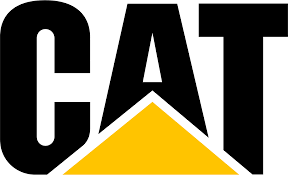This article explains 3406E, C-10, C-12, C-15, C-16 AND C-18 TRUCK ENGINE troubleshooting without diagnostic codes
CAT Caterpillar ET 3 Diagnostic Adapter 317-7485/478-0235 Diagnostic Tool-high quality
Can Not Reach Top Engine RPM
Probable Causes Note: If this problem occurs under load, refer to Troubleshooting, “Low Power/Poor or No Response to Throttle”.
The probable root causes are listed in order below:
Diagnostic codes
Customer specified parameters normal
Cold mode
Accelerator pedal position sensor
Vehicle speed signal
Fuel supply
Power train data link
Air intake and exhaust system
Recommended Actions:
1. Check for diagnostic codes.
a. Connect the electronic service tool to the data link connector.
b. Check for active diagnostic codes and/or logged diagnostic codes.
Certain diagnostic codes will limit the engine speed.
c. Troubleshoot all active diagnostic codes before continuing with this procedure.
2. Check customer specified parameters.
a. Verify that the complaint is not normal operation (programmed parameter).
b. Access the “Configuration”screen on the electronic service tool.
12.2021 Caterpillar ECM ECU Flash Files Full Set Download
c. Check the following parameters:
“Vehicle Speed Limit”
“Lower Gears Engine RPM Limit”
“Intermediate Gears Engine RPM Limit”
“Gear Down Protection Engine RPM Limit”
“Top Engine Limit”
“VSL Protection”
“PTO Top Engine Limit”with the PTO On/Off Switch turned ON.
“PTO Vehicle Speed Limit”with the PTO On/Off Switch turned ON.
d. Set each parameter to the parameter’s maximum value one at a time and determine whether the problem is corrected.
3. Check Cold Mode operation.
Note: This is normal operation if the problem occurs only after start-up in cold weather.
a. Monitor the electronic service tool in order to verify that the engine has progressed from Cold Mode.
“Cold Mode”is indicated in the upper corner of any status screen.
4. Check the accelerator pedal position sensor.a. Use the Cruise/ldle On/Off Switch to put the engine in idle mode.
b. Vary the engine rpm with the Set/Resume switches.
If both of the following conditions are met, monitor the status of the accelerator pedal position sensor.
The engine is stable by using idle mode to control the engine rpm.
The engine is unstable by using the accelerator pedal position sensor.
If the status of the accelerator pedal position sensor is unstable, refer to Troubleshooting,”Accelerator Pedal (Throttle) Position Sensor Circuit -Test”.
5. Monitor the vehicle speed signal. Ensurethe accuracy of the vehicle speed signal by comparing the vehicle speed signal to the actual vehicle speed.
6. Check the fuel supply.
a. Monitor the exhaust for smoke while the engine is being cranked.
If no smoke is present, there may be a problem with the fuel quality or there may be a problem with the fuel supply.
b. Check the fuel quality. Refer to Testing and Adjusting, “Fuel Quality -Test”. Also refer to the Truck Performance and Driveability Diagnostic Guide, LEBT3477.
c. Check the fuel pressure. Refer to Testing and Adjusting, “Fuel System Pressure -Test”.
d. Ensure that the fuel system has been primed.
Refer to Testing and Adjusting, “Fuel System Prime”.
e. Check for fuel supply lines that are restricted.
f. Check the fuel filters.
g. If the temperature is below 0 °C (32 °F), check for solidified fuel (wax).
h. Check for air in the fuel system. Refer to Testing and Adjusting, “Air in Fuel -Test”.
7. Check the “Powertrain Data Link”. Ensure that the power train data link is not limiting the power.
a. Monitor the “Powertrain Data Link”status screen while the vehicle is experiencing problems.
Caterpillar ET 2024A & 2023C & 2019C Electronic Technician Diagnostic Software Download and Installation
8. Air intake and exhaust system If the “Powertrain Data Link”status screen indicates that the “Powertrain Data Link”is limiting the power or the rpm, verify that this is not normal operation. If this is not normal operation, refer to the vehicle OEM for repairs.
a. Clean plugged air filters or replace plugged air filters. Refer to the Operation and Maintenance Manual.
b. Check the air intake and the exhaust system for restrictions and/or leaks. Refer to Testing and Adjusting for more information.


